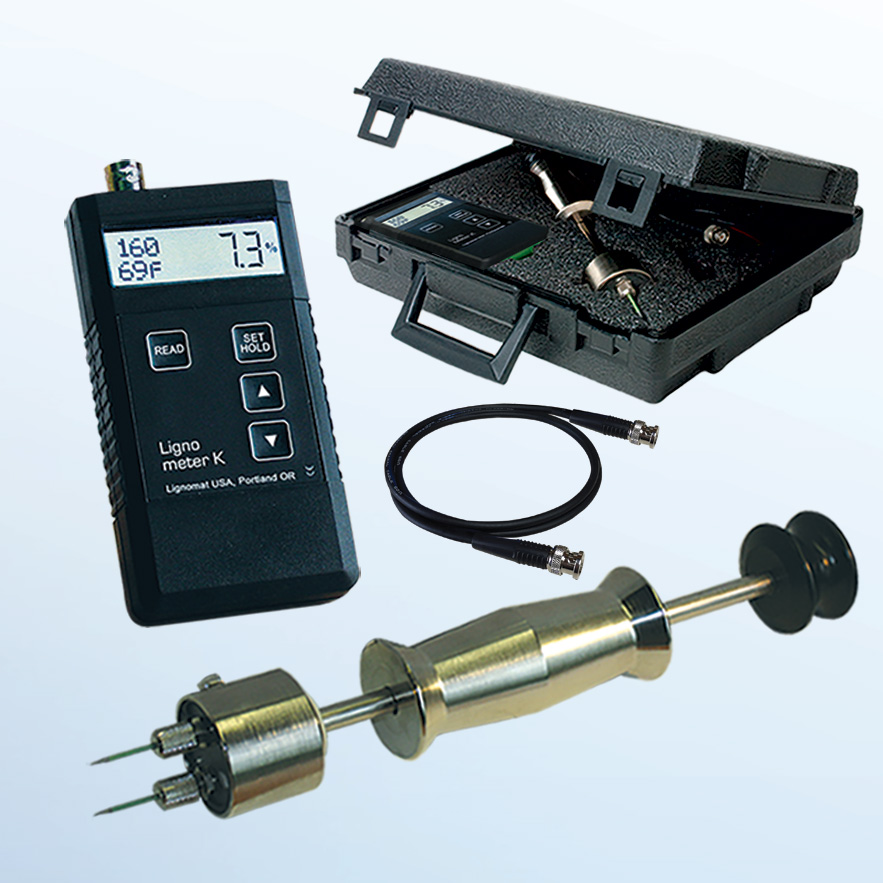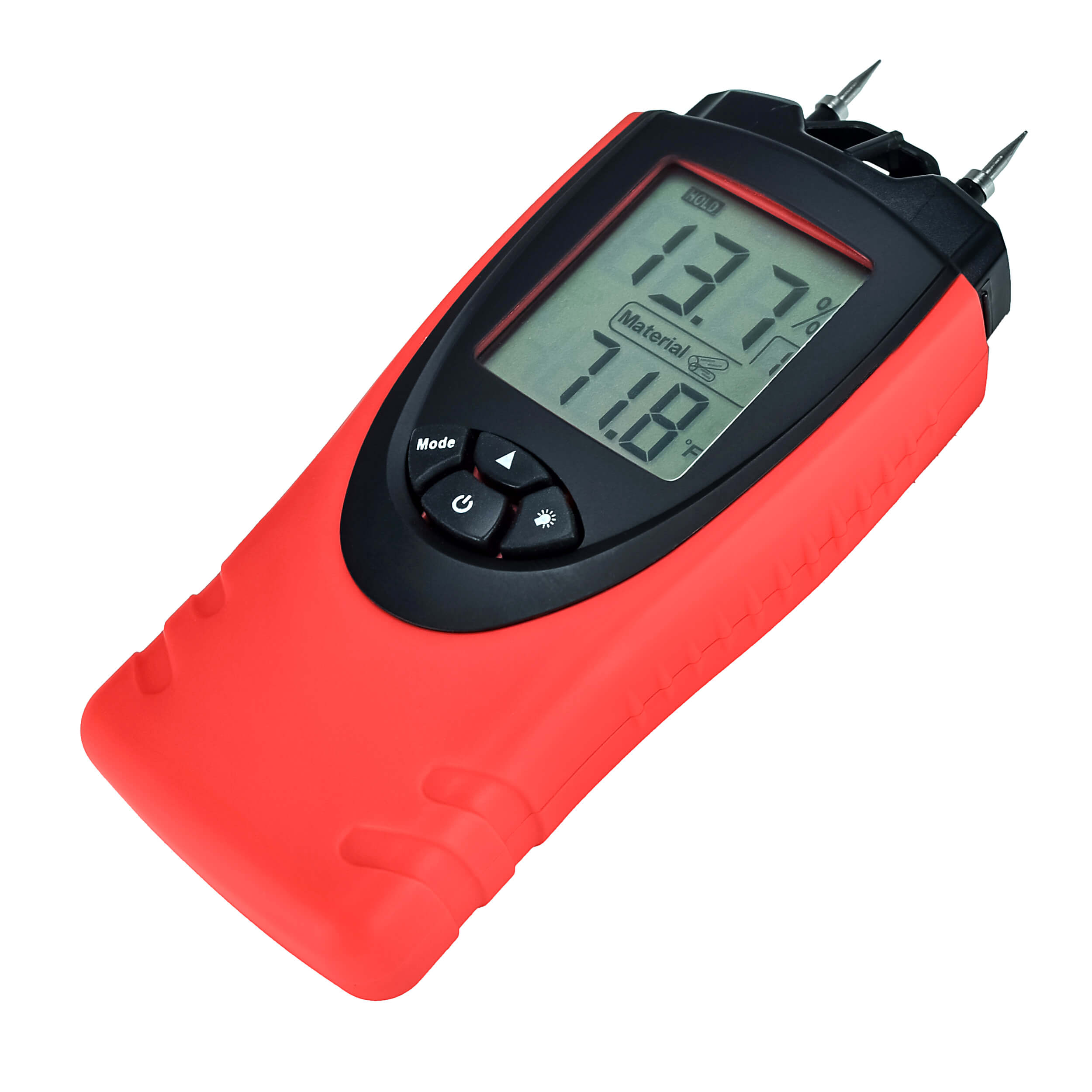The Ultimate Overview to Picking the Right Moisture Meter for Your Demands
The Ultimate Overview to Picking the Right Moisture Meter for Your Demands
Blog Article
The Ultimate Guide to Moisture Meters: A Comprehensive Review and Just How They Can Conserve You Money
In the realm of structure upkeep, building and construction, and different markets, the importance of accurately gauging wetness levels can not be overstated. Dampness meters work as important tools in spotting and monitoring moisture web content in materials, aiding in protecting against pricey damages and ensuring the top quality of products. Understanding the subtleties of different kinds of wetness meters, their applications, and the potential cost-saving advantages they use can be a game-changer for companies and specialists alike. Discovering just how these tools can not only improve procedures but additionally contribute to economic savings is a journey worth embarking on.
Types of Moisture Meters
One common type is the pin-type wetness meter, which gauges the electrical resistance between two pins placed right into a product. Pinless moisture meters, on the other hand, usage electro-magnetic sensing unit plates to check a larger area without triggering damages to the product's surface area.
Infrared moisture meters measure the thermal residential or commercial properties of a material to determine its dampness web content non-invasively, making them beneficial for applications where pin or pinless meters may not be appropriate. Comprehending the different kinds of wetness meters offered can help sectors pick the most ideal device for their certain moisture dimension demands.

Advantages of Utilizing Moisture Meters

In addition, using moisture meters can cause raised power efficiency. By identifying areas with high wetness degrees, such as leakages or inadequate insulation, changes can be made to improve energy conservation and decrease utility expenses. In farming setups, wetness meters play a critical duty in optimizing crop yields by enabling farmers to keep track of soil moisture levels and make informed irrigation decisions. In general, the benefits of using moisture meters span across various sectors, providing cost-effective solutions and advertising better quality assurance practices.
Exactly How to Choose the Right Moisture Meter
Picking the proper wetness meter involves taking into consideration crucial elements such as material compatibility, dimension variety, and calibration accuracy. When picking a moisture meter, it's important to make certain that the meter appropriates for the particular product you will be screening. Various materials have differing electrical properties that can influence moisture analyses, so selecting a meter made for your material is critical for exact results. Additionally, think about the measurement variety of the moisture meter. Make sure that the meter can discover moisture levels within the array required for your applications. Calibration precision is another important factor to remember (Moisture Meter). Opt for a wetness meter with reliable calibration to make sure precise and constant readings. Some meters might call for periodic calibration modifications, so understanding the calibration process is very important. By carefully examining these variables, you can choose a wetness meter that fulfills your needs and offers precise dampness dimensions for your projects.
Appropriate Methods for Moisture Meter Use
To ensure accurate wetness analyses and make best use of the effectiveness of a wetness meter, utilizing correct strategies is essential. When using a pin-type wetness meter, place the pins or probes right into the product being checked till they make complete call. Ensure the pins are perpendicular to the surface to get the most precise reading. For pinless moisture meters, hold the device flat against the material and relocate gradually to cover the whole location Visit Website for an ordinary analysis. It's critical to adjust the dampness meter according to the product being checked to improve precision. Take several readings across the surface and average them out for an extra reliable outcome. In addition, make sure that the product being evaluated is accustomed to the environment to avoid skewed readings. Normal upkeep of the wetness meter, such as cleaning up the pins or sensor, is additionally essential to make sure constant and accurate readings. By following these correct strategies, customers can depend on their wetness meter to provide reliable wetness levels, aiding in protecting against expensive damage or making certain high quality in various applications.

Expense Savings Via Moisture Meter Applications
Just how can the critical utilization of moisture meters lead to considerable expense financial savings throughout numerous industries? In the agriculture sector, wetness meters aid in figuring out the optimum time for gathering plants, protecting against excess or over-drying wetness that can impact the final item's top quality.

In addition, in the food handling industry, moisture meters are important for keeping track of product high quality and making sure compliance with security guidelines. By precisely determining wetness material in foodstuff, producers can avoid putridity, maintain freshness, and reduce waste, resulting in substantial price financial savings. Generally, the calculated application of wetness meters is an important investment that can lead to significant price decreases and enhanced efficiency throughout numerous markets.
Conclusion
In verdict, moisture meters are useful devices for discovering and measuring wetness levels in this post numerous materials. By utilizing the right wetness meter and adhering to proper methods, customers can efficiently protect against costly damages created by excess moisture.
Moisture meters serve as essential devices in finding and monitoring moisture material in products, assisting in preventing costly damages and making certain the top quality of products. Infrared moisture meters determine the thermal properties of a material to determine its wetness material non-invasively, making them beneficial for applications where pin or pinless meters might not be ideal.Dampness meters offer important advantages in precisely examining and checking dampness degrees in varied products and settings. In farming setups, wetness meters play an important function in enhancing crop yields by enabling farmers to keep track of soil moisture degrees and make educated watering decisions.In final thought, moisture meters are valuable devices for detecting and gauging wetness levels in various products.
Report this page